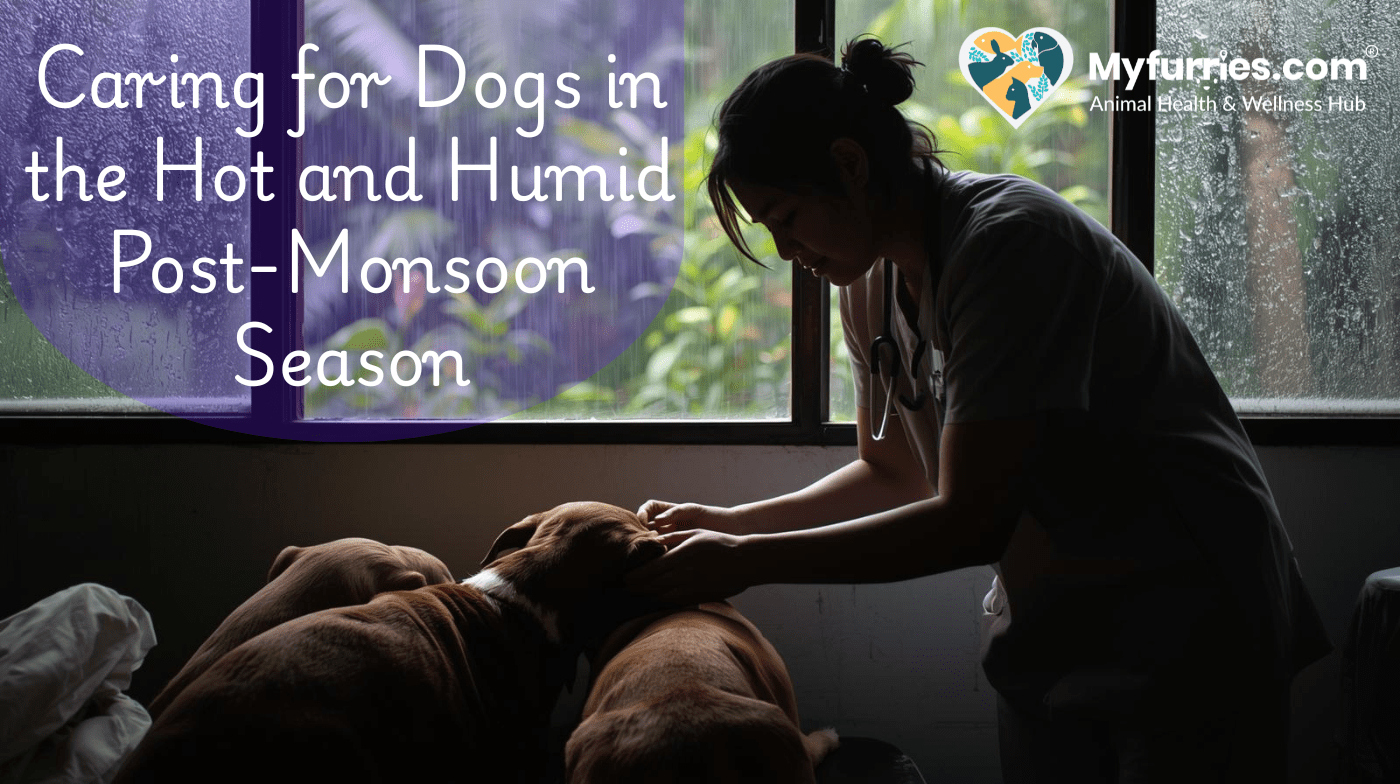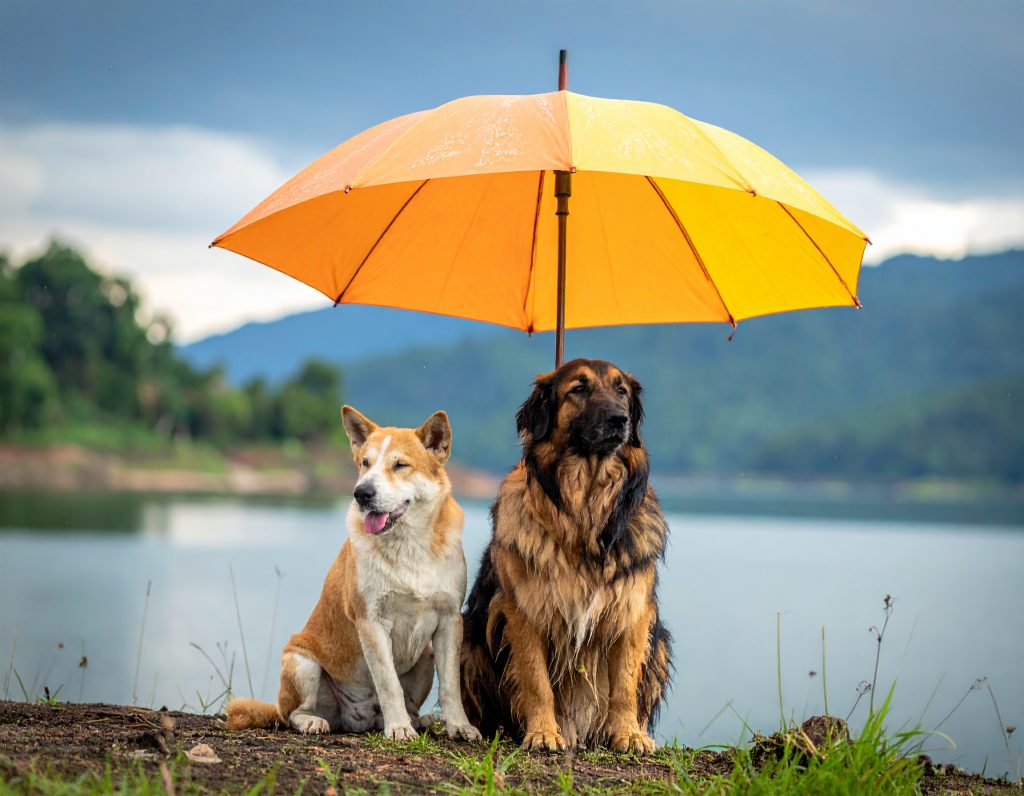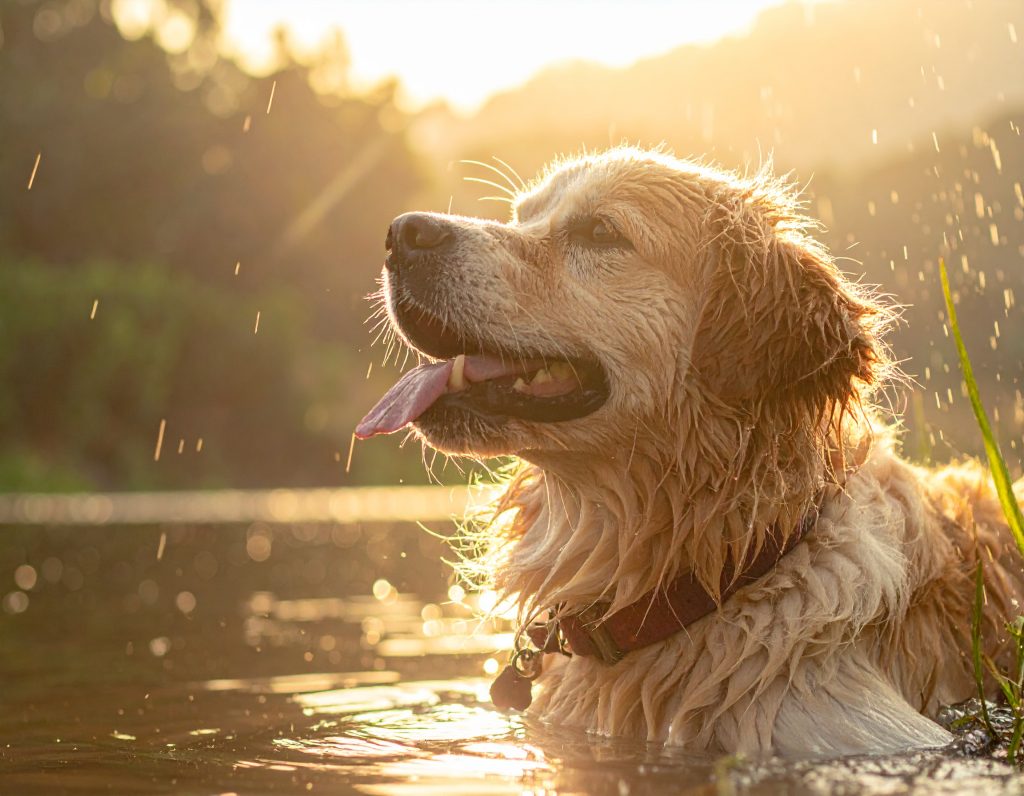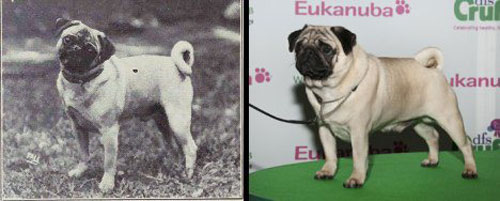Caring for Dogs in the Hot and Humid Post-Monsoon Season

The transition from the monsoon season to the next phase of weather can be incredibly stressful for dogs.
Instead of a cool-down period, the weather becomes hot and humid, a combination that poses serious health risks. Unlike humans, dogs can’t sweat effectively to cool down. They rely on panting, and when the air is thick with moisture, this process is significantly less efficient, making them highly susceptible to heat-related illnesses and other health problems.

1. Combatting the Dangers of Heatstroke: Heatstroke is a life-threatening medical emergency for dogs, and humidity is its primary accomplice. When a dog pants, moisture from their lungs evaporates, taking heat with it. But in a humid environment, the air is already saturated with water, preventing this vital heat-exchange process.
- Symptoms: Look for early signs like heavy, rapid panting and excessive drooling. As the condition worsens, a dog may show a bright red or pale tongue, staggered walking, vomiting, and in severe cases, seizures or collapse.
- Prevention:
- Strategic Timing: The most critical step is to avoid the hottest and most humid parts of the day. Schedule walks and exercise for early morning and late evening when the temperature and humidity are at their lowest.
- Hydration is Non-Negotiable: Always provide access to fresh, cool water. Carry a portable water bottle and a bowl on walks, and encourage your dog to drink frequently.
- Create a Cool Sanctuary: On particularly humid days, keep your dog in an air-conditioned room or a well-ventilated space. A cooling mat or a fan can also provide a lot of relief.
- Never, Ever Leave a Dog in a Car: Even with the windows slightly open, the humidity and trapped heat inside a car can become fatal in minutes.
2. Preventing Skin and Coat Infections : The post-monsoon period is a breeding ground for bacteria and fungi. The combination of residual dampness from the monsoon and the new heat creates the perfect environment for these microbes to thrive on a dog’s skin.
- Common Conditions:
- Hot Spots (Acute Moist Dermatitis): These are painful, red, and raw patches of skin that can appear and spread quickly. They are often triggered by a dog excessively licking a spot and are exacerbated by the humid heat that traps moisture.
- Fungal and Yeast Infections: These infections thrive in moist areas like a dog’s ears, between their toes, or in skin folds. They can cause a foul odor, redness, and constant itching.
- Prevention:
- Thorough Drying: If your dog gets wet, dry their coat completely. Pay special attention to their ears, paws, and any skin folds where moisture can be trapped.
- Grooming: A well-groomed coat allows for better air circulation against the skin. Regular brushing and professional grooming for thick-coated breeds can make a significant difference.
- Check for Parasites: The weather is still ideal for fleas and ticks. Continue to use vet-approved preventatives and check your dog’s coat daily.

3. Managing Digestive and Dehydration Risks: The stress of the hot and humid weather can also impact a dog’s digestive system. Panting leads to fluid loss, and a dog that isn’t drinking enough can quickly become dehydrated, leading to gastrointestinal issues.
- Symptoms: Look for signs of dehydration like dry gums, sunken eyes, or a loss of skin elasticity. Other symptoms include vomiting, diarrhea, and a loss of appetite.
- Prevention:
- Clean Water: Ensure your dog has constant access to fresh, clean water. Do not let them drink from puddles or stagnant water on walks.
- Dietary Care: Store dog food in a cool, dry place to prevent it from spoiling in the humidity. A healthy, balanced diet is essential for a strong immune system.
- Monitor Activity: Do not over-exercise your dog. The heat can cause rapid fatigue and stress their digestive system.
By being mindful of the dual threat of heat and humidity, you can take the necessary precautions to keep your dog safe and comfortable as the seasons change. Always consult your veterinarian if you notice any concerning symptoms.





